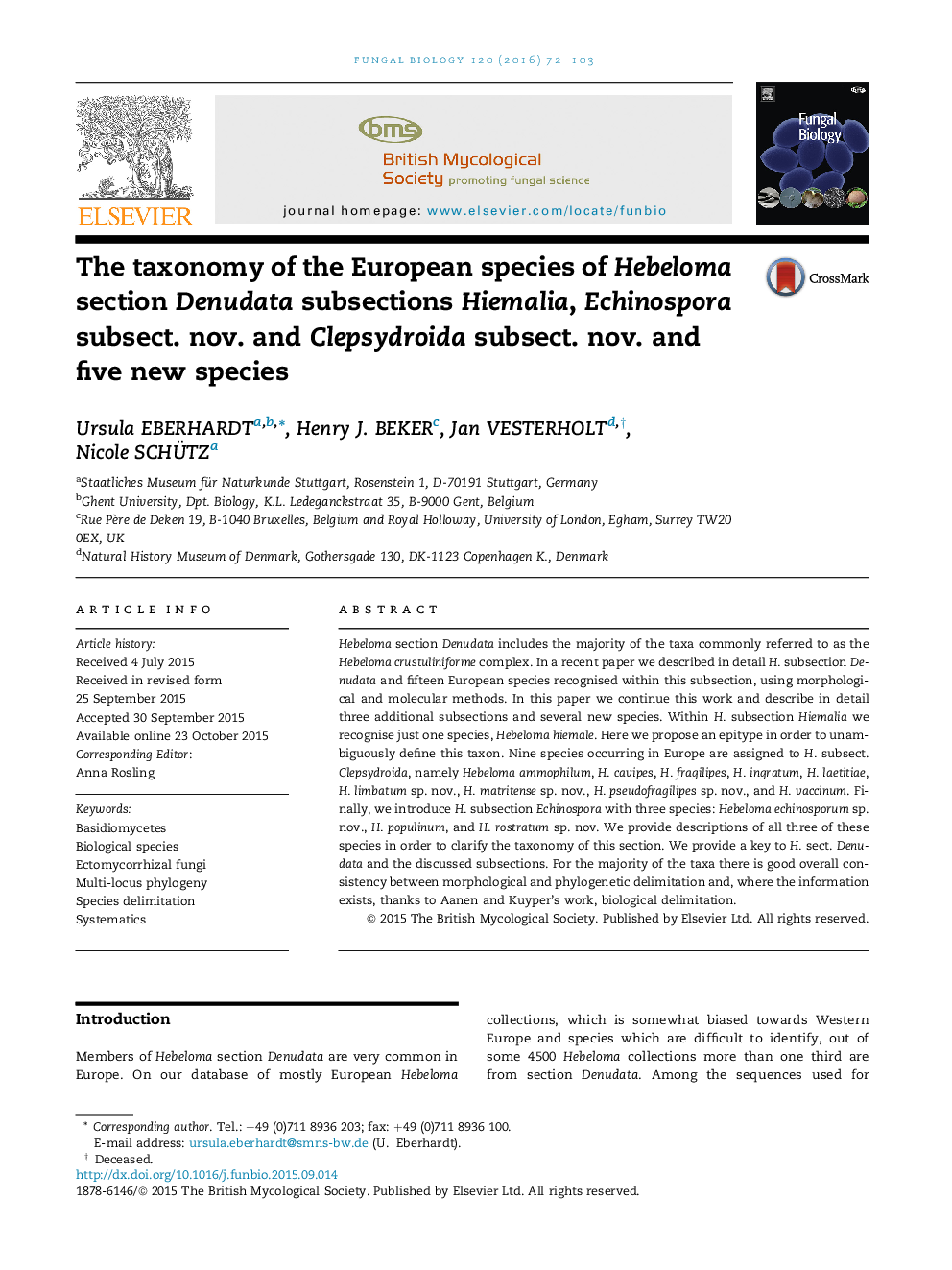| Article ID | Journal | Published Year | Pages | File Type |
|---|---|---|---|---|
| 6287865 | Fungal Biology | 2016 | 32 Pages |
â¢Cheilocystidia shapes are important for delimiting infrageneric taxa in Hebeloma.â¢Up to six loci were sequenced of 270 collections to test subsection and species limits.â¢Five new species and two new subsections are described.â¢Good overall consistency between morphological and phylogenetic taxon limits.â¢Also consistency with intercompatibility groups of Aanen & Kuyper where data exist.
Hebeloma section Denudata includes the majority of the taxa commonly referred to as the Hebeloma crustuliniforme complex. In a recent paper we described in detail H. subsection Denudata and fifteen European species recognised within this subsection, using morphological and molecular methods. In this paper we continue this work and describe in detail three additional subsections and several new species. Within H. subsection Hiemalia we recognise just one species, Hebeloma hiemale. Here we propose an epitype in order to unambiguously define this taxon. Nine species occurring in Europe are assigned to H. subsect. Clepsydroida, namely Hebeloma ammophilum, H. cavipes, H. fragilipes, H. ingratum, H. laetitiae, H. limbatum sp. nov., H. matritense sp. nov., H. pseudofragilipes sp. nov., and H. vaccinum. Finally, we introduce H. subsection Echinospora with three species: Hebeloma echinosporum sp. nov., H. populinum, and H. rostratum sp. nov. We provide descriptions of all three of these species in order to clarify the taxonomy of this section. We provide a key to H. sect. Denudata and the discussed subsections. For the majority of the taxa there is good overall consistency between morphological and phylogenetic delimitation and, where the information exists, thanks to Aanen and Kuyper's work, biological delimitation.
Graphical abstractDownload high-res image (440KB)Download full-size image
